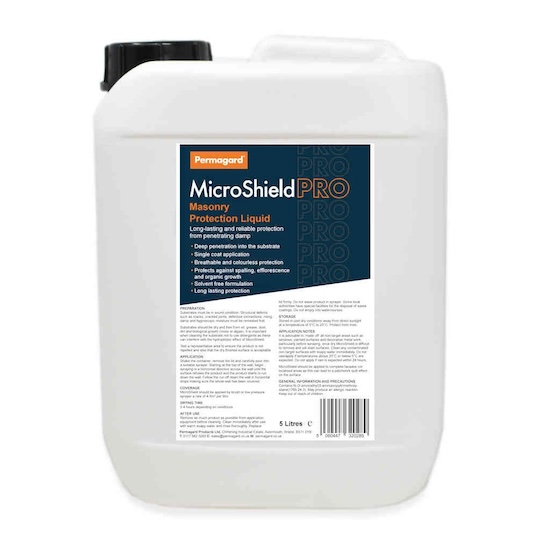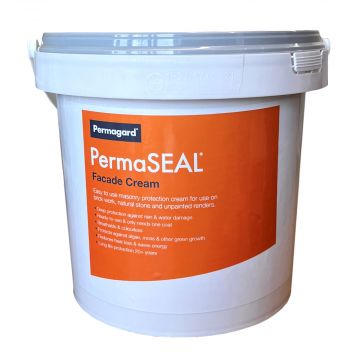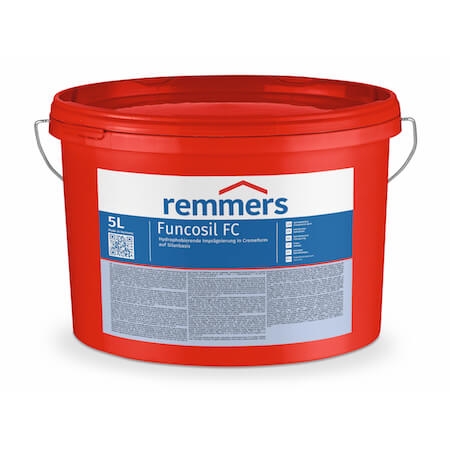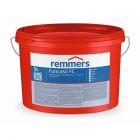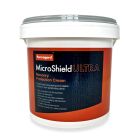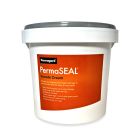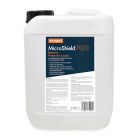Help & Advice Articles, Videos and How-to-Guides
Filter Articles
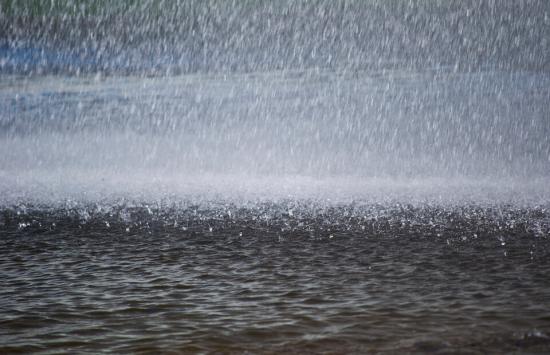
How to treat penetrating damp with water repellents
Your home may be suffering from penetrating damp, and you're wondering how to resolve the issues and protect your property going forward. We're here to help, giving you some tips on how to spot penetrating damp and the best treatments available.
What is penetrating damp?
Penetrating damp is when water penetrates the exterior of a building and travels through to the interior. Once the water is in the substrate e.g. brickwork, moisture will begin to seep through to the internal walls and cause damage. Penetrating damp often means that salts and other pollutants are carried into the façade of the building. Sounds serious, right? And yes, it can be.
Penetrating damp is often the result of an underlying building issue such as missing render, cracks in the masonry, defective/retrofit cavity insulation, damaged water management systems, broken gutters or defective plumbing. It can be caused by driving rain and adverse weather conditions too, and providing protection from the elements is a good proactive step.
Why is penetrating damp important to spot?
Penetrating damp can lead to a variety of different issues:
- Corrosion of wall ties and metal framework
- Damp issues on internal walls - damage to decoration, damp patches, mould
- Damage to timber
- Loss of structural strength and stability
- Growth of algae and lichen on external walls
- Cracked and defaced bricks
- Increased heat loss, leading to higher energy bills
If penetrating damp is left untreated, the strength of the building’s facade can be affected. Damp substrates can start to deteriorate in the freeze-thaw cycles, causing cracking and defacing of bricks. If your property is suffering with some of these more serious penetrating damp issues, it is vital you seek specialist help to stop the damage spreading.
Properties that are suffering from minor symptoms of penetrating damp can still experience changes that will impact you. One prominent change is the building’s thermal conductivity. Penetrating damp significantly reduces the property’s insulation, as the moisture continues to seep deeper into the interior walls.
It is not just your property that will suffer: any form of damp on internal surfaces can make respiratory health problems, such as asthma, much worse.
Can penetrating damp cause health problems?
Penetrating damp as an isolated issue does not directly cause health problems. However, it can cause the growth of mould. This leads to airborne spores that can cause allergic reactions, rashes, breathlessness, red eyes, coughing and asthma attacks. Mould spores are particularly dangerous to children, the elderly and those with a compromised immune system. Find out more about the impact of mould on health.
What are the signs of penetrating damp?
Noticing the signs of a penetrating damp problem early on could save you a lot of time and money. Signs of penetrating damp can be seen on the outside and inside of a building so make sure that you check both.
Penetrating damp on outer walls
- Damp patches on outer walls - One of the most basic signs of penetrating damp are wet patches on an outer wall surface. When an area of the outer wall is compromised, ingress will usually travel around the brickwork creating localised damp patches.
- Damaged outer brickwork - When water ingress takes place through outer walls, moisture is often left within the brickwork. In colder seasons this trapped moisture within the compromised brickwork will freeze and expand, cracking the brickwork even more.
- Algae growth on outer walls - Any wall that’s been damp for a long period will provide the perfect surface for algae and moss to grow. Keep an eye out for widespread algae growth on outer walls.
Penetrating damp internal walls
- Damaged internal decoration - Stains on wallpaper, blistering of plaster and general decorative spoiling can be an indication of advanced penetrating damp. This occurs when the water ingress has progressed to the inner walls.
- Mould - Like algae on outer walls, the presence of mould on walls and ceilings is usually a sign that static moisture is present and has been for a long time. Read more on how to remove mould on walls.
- Wet rot - Crumbled, rotting or flaky skirting boards, window frames and mouldings that smell musty may be an indication that penetrating damp has reached your internal structure. Read more on identifying and treating wet rot.
What can I do to cure penetrating damp?
You will need to fix the underlying building fault or issue that is leading to the penetrating damp. Some of these issues will relate to damaged masonry work and structural issues like cracked roof tiles, bad plumbing and cracked render. In these cases, you’ll need to physically fix or replace the affected areas.
It may be that water ingress is occurring due to masonry and brickwork being too absorbent. Over time, old bricks become worn and less able to repel water. In this case water repellent coatings for bricks can be used depending on the severity of the damage.
Best Penetrating Damp Treatments
The best course of action with penetrating damp is always prevention. We have listed three water repellents that you can apply now that will stop penetrating damp from developing. They are also highly effective at treating penetrating damp quickly and effectively. When applied, these products will absorb into the masonry and block any water from travelling any further.
All our water repellents are designed to line the pores of the masonry to form a water repellent silicone matrix rather than a film on the surface. Because they line the pores rather than blocking them, the masonry is allowed to breathe. Any moisture that is in the masonry is therefore allowed to evaporate naturally.
Microshield
Permagard’s Microshield is an effective high-performing water repellent suitable for external use on masonry materials such as brick, concrete and stone. In one single coat, this microporous water repellent will protect masonry materials against penetrating damp.
This ready to use liquid water repellent is based on silanes and siloxanes, rapidly curing penetrating damp even at near zero-degree temperatures. Simply by applying one single coat of our colourless and odourless solution, you will create a microporous layer, protecting the surface against driven rainwater.
Unlike most water repellents, Microshield PRO Masonry Water Repellent can be applied to highly alkaline, dry or damp cement-based surfaces. It's not suitable however for wet, green-cured cements or concretes.
Microshield is a reliable water repellent, creating an invisible layer that protects against wind-driven rain and surface moisture.
We also sell it in 25 litre containers for those bigger masonry jobs.
Microshield Ultra Masonry Waterproofing
Microshield Ultra is an advanced professional masonry waterproofing cream specially designed to create long-lasting protection (up to 30 years) for brickwork and façades. It protects against efflorescence and destruction by water soluble pollutants as well as against frost damage and the attack of microorganisms.
This water repellent cream imparts a strong beading effect to mineral surfaces. The beading effect causes water to simply ‘bead’ on the surface and roll off, allowing the material to maintain its natural moisture balance.
Find out more about how this masonry protection cream product works, and read about the experiences of our customers who have used MicroShield.
Aside from being an excellent water repellent, Microshield Ultra can also save you money by improving the building’s thermal performance. This water repellent reduces heat loss through damp or wet walls, which means you save money on energy bills.
Microshield Ultra guarantees long-life protection due to its ability to penetrate deep into the surface.
Façade Cream Water Repellent
Façade cream is generally used for waterproofing, creating an invisible barrier against water penetration on external masonry.
The water repellent forms a barrier against water and will effectively improve the building’s thermal performance over time. Heat lost through damp or wet walls could reduce up to 30%. This is increasingly important with high energy costs.
Or click on the link for more insight into how PermaSEAL Facade Cream works.
PermaSEAL Facade cream will also reduce growth of algae and other organisms which normally appear on damp surfaces by reducing the amount of water available for them to grow.
We also stock Remmers Funcosil FC - another quality masonry water repellent cream.
Masonry water repellent for painted bricks and masonry
Permagard do not stock a water repellent for painted brick work, masonry or render. The paint on the surface acts as a barrier which prevents the active water repellent ingredients from penetrating the surface. This makes the treatment inconsequential.
For painted surfaces we suggest preparing the surface and re-painting with a water-resistant masonry paint such as Dulux Weathershield. Make sure you follow the manufacturer's application guidelines closely.
Permagard - Providing Solutions. Inspiring Confidence.
Call us on 0117 982 3282 to talk to us about our range of penetrating damp treatments, or if you have any questions about protecting your home from rain and bad weather. We'd love to hear from you.
BROWSE OUR RANGE OF WATER REPELLENTS OR READ OUR COMPLETE GUIDE TO WATERPROOFING BRICKWORK AND MASONRY.
